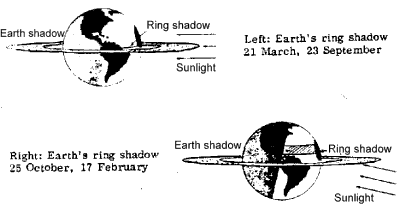 |
Science Frontiers ONLINE No. 12: Fall 1980 |
|
|
The earth's ring
The most profound climatic event of the Tertiary was the terminal Eocene event 34 million years ago. The sudden change in the abundance of forest plants suggests that the winters became much more severe while the summers remained about the same. At about the same time, the radiolaria were devastated by some sort of disaster. This was also the time when the North American tektite strewn field was deposited -- a field that stretches halfway around the world. John O'Keefe hypothesizes that some of the tektites and microtektites that rained down during this period missed the earth and went into orbit around it, forming an opaque Saturn-like ring. This ring might have lasted a million years or more; and its shadow could have caused the extrasevere winters postulated from botanical data.
(O'Keefe, John A.; "The Terminal Eocene Event; Formation of a Ring System around the Earth," Nature, 285:309, 1980.)
Comment. Many who have previously speculated about terrestrial ring systems, such as I.N. Vail, were called pseudoscientists!
Reference. The North American tektites are the subject of Section ESM3 in our Neglected Geological Anomalies. Ordering information here.
